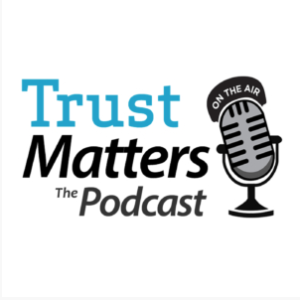Ever had a difficult client? I don’t mean the client from hell, I just mean garden-variety difficult. Difficult clients come in lots of different flavors.
- There’s the client who will not take the time up front to share critical information, explore ideas, or otherwise involve you in the early stages of a project.
- There’s the client who just cannot make a decision, regardless of how much data or analyses you provide at their request.
- There’s the client who is frozen by politics or fear or ignorance, who will not face facts about critical issues.
- Finally, there’s the client with personality issues, who argues, or rejects, or is otherwise disrespectful to you and your team, yet often shows favoritism to someone else or another team.
Fortunately, there is a common thread to all of these cases, which – if we understand it – can help us succeed.
The common thread has nothing to do with the clients. The common thread is us.
The Client Situation
First, let’s get some perspective – about our clients, and about ourselves.
We’ve all said, if only in our heads, “My client is a jerk.” But “My client is a jerk” is a terrible problem statement. The client is unlikely to accept it as a problem statement. It’s highly subjective, and it’s quite unverifiable.
People in a position to hire outside professionals typically have achieved some degree of success in life. While it’s popular lately to describe the prevalence of “a**holes” in business (see Robert I. Sutton’s book, The No A**hole Rule: Building a Civilized Workplace and Surviving One That Isn’t), my guess is their frequency is overestimated. Most clients are intellectually and emotionally intelligent.
Most clients have spouses, or parents, or siblings, who seem to be quite capable of loving them. Most have a boss who has promoted them.
It is wise to assume that, even if their behavior is bad, they have some ability to get by in life. True psychotics are pretty rare in business.
Furthermore, truly bad behavior, more often than not, comes from decent people who are stressed out. If someone is behaving badly, it’s a good bet that they are afraid–of losing something they have, or of not getting what they want.
If you can identify that fear, then you can replace demonization with a real problem statement, which is a far more productive approach. If, further, you can talk about that fear with your client, you will create a lasting bond that can serve you both well.
Our Own Situation
What’s true of clients about fear and bad behavior is equally true for us. Particularly in selling, we are loaded with fears. We are afraid, first of all, of not getting the sale.
And it goes deeper. We’re afraid of our boss, peers and loved ones knowing that we might not get the sale and judging us. We’re afraid of clients judging us, too–feeling that if we don’t get the sale, it means they think less of us.
But we ourselves carry the ultimate judges around in our own heads. We allow ourselves to be hijacked and held hostage by our own ideas of what constitutes success, or being “good enough,” or whatever value judgments we distill from our past, and apply to ourselves. There’s a thin line between having high standards and beating up on oneself.
If we allow ourselves to act from those fears, we are likely to run from judgment. One of the most emotionally attractive ways out of the tyranny of self-judgment is to blame others. “It was not my fault,” we want to say, or “The dog ate my homework,” or “It was a bad hair day.” More to the point, we might say, “This sale was doomed because I got stuck with a difficult client. If you’d had my client, you couldn’t have done much either. It wasn’t my fault – it was the client’s.”
But blame is more useless to us than our appendix. At least when an appendix gets inflamed, we recognize it and operate to remove it. When blame flares up, people at first commiserate with you, encouraging it. Then as it metastasizes into resentment, people begin to move away from you. Resentment, it is said, is like taking poison and waiting for the other person to die. Misery may love company, but company doesn’t return the favor.
Blaming a client never got you the sale, and it never will; but it may keep you from getting the next one. People don’t like blame-throwers. Clients especially don’t.
If there is such a thing as a truly “difficult” client, the only valid lesson to draw from the experience is to avoid similar clients in the future. And that is a lesson best kept to yourself.
Self-Diagnosing
Again, what’s true of clients is equally true for us. Particularly in selling, we are prone to fear, hence to blame. And that leads to nothing good.
The first thing to do is to notice our thoughts. Practice taking a “snapshot” of your thoughts when you are stressed.
Ask yourself, “What is the problem here?” If your mental snapshot answer starts with, “My client won’t…” or “My client doesn’t…” or “I can’t get my client to…” or “My client never…” then you need to step back and reframe your thinking. You are stuck in the blame game, spinning your wheels, and going nowhere.
You need a problem statement that has you in it, first of all. And almost always it should be a problem statement that is joint. If you and your client can’t even agree about why you’re not getting along, you’re certainly not going to make much progress on the substantive issues you want to work on.
Good problem statements are joint. Jointness is reflected in language, e.g.:
- Our problem is we have differing views about the priority of X and Y.
- We seem to have a problem in communicating when it comes to Q and R.
- It looks like we differ about the timeframe to be considered here.
If you have a “difficult” client, find a “we” statement you can each agree to that gets to the heart of the disagreement.
Fixes
Sometimes, all we need to do is jointly reframe an issue and–voila–our client no longer seems so difficult.
It never hurts to go back to basics. One reason people act badly is that they have not had someone listen to them. Really listen. Deeply. Without reacting with suggestions or action steps. Just for the sake of understanding. “Just” understanding our clients often ends up being the catalyst that changes everything.
But sometimes, we need to do some advanced work on ourselves–in particular, to find out what we have become attached to that holds us hostage. Here are a few:
- Don’t hold yourself hostage to the outcome. We should have points of view–that is part of what clients pay for. And we should argue clearly and forcefully for what we believe is right. But we are not responsible for our clients’ actions–only for informing their actions as best we can. No one ultimately controls another human being without their consent–even at gunpoint. Holding ourselves accountable for changing others is a recipe for misery. Do the next right thing and then detach yourself from the results. You don’t own the outcome.
- Check your ego at the door. The best way to lose the sale is to try very hard to get the sale; the best way to lose the argument is to try very hard to win the argument. It is not about you. The only one who thinks it is about you is you. Focus on the client, not yourself.
- Be curious. Is your client “difficult?” Be curious as to why. What is he afraid of? What is at stake for her? What is your role in the situation? What are you afraid of? On what basic issues do you see differently? What do you think the client sees as the problem statemen? What problem are you both trying to solve?
There aren’t any difficult clients. Not really. There are only relationships that aren’t working well. And nearly all of those can be fixed. But it must start with us.
As Phil McGee says, “Blame is captivity; responsibility is freedom.” To get free of “difficult clients,” take responsibility for fixing the relationships.
This blogpost was originally posted in RainToday.com


 One of the Holy Icons of marketing is the concept of customer focus. It’s almost always used to signify a good thing, and something that is self-evident – that doesn’t require a lot of explanation. Of course, in reality things are a little more shades-of-grey.
One of the Holy Icons of marketing is the concept of customer focus. It’s almost always used to signify a good thing, and something that is self-evident – that doesn’t require a lot of explanation. Of course, in reality things are a little more shades-of-grey.